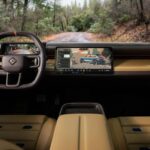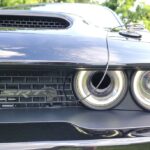Recent developments within the Volkswagen Group (VWG) under Oliver Blume’s leadership, who also heads Porsche, suggest a strategic shift that may be influencing the highly anticipated Porsche 718 Ev. Since Blume assumed leadership, two significant initiatives have emerged: the formation of BatteryCo, leveraging QuantumScape’s solid-state battery (SSB) technology, and a joint venture with Rivian for electronic architecture and vehicle software. VWG has explicitly stated that technologies from these ventures will be integrated across their brands, including Porsche.
This strategic direction likely has implications for the 718 EV’s development timeline. The current delay in the 718 EV launch may be attributed to a strategic rethink, specifically aimed at incorporating these advancements. Solid-state batteries, for instance, offer a significant advantage for electric sports cars like the 718. SSB technology promises to reduce battery weight for a given kilowatt-hour (kWh) capacity, crucial for achieving a desirable range, estimated around 250 miles, while maintaining the agility and performance expected from a Porsche 718. Furthermore, the 718, with its lower production volume and market profile compared to the iconic 911, presents an ideal opportunity for Porsche to introduce an all-electric sports car with potentially groundbreaking technology at a relatively lower risk.
Market dynamics, including the financial challenges faced by battery manufacturer Northvolt, may have also contributed to this strategic shift and the 718 EV delay. The evolving EV market, which is showing signs of rebound globally, provides Porsche with additional time to refine the 718 EV and potentially integrate these advanced technologies optimally.
Looking ahead, Porsche might consider adopting a versatile approach similar to BMW, offering customers a choice between internal combustion engine (ICE), plug-in hybrid electric vehicle (PHEV), and battery electric vehicle (BEV) powertrains within the same model line. While this strategy involves design and engineering compromises, it could be a pragmatic solution for the transitional automotive landscape of the next few years, aligning with typical 4-year vehicle platform lifecycles. Such flexibility could prove valuable as both technology and market preferences continue to evolve rapidly. Another four years will undoubtedly bring significant changes to both the automotive technology landscape and consumer demand.

